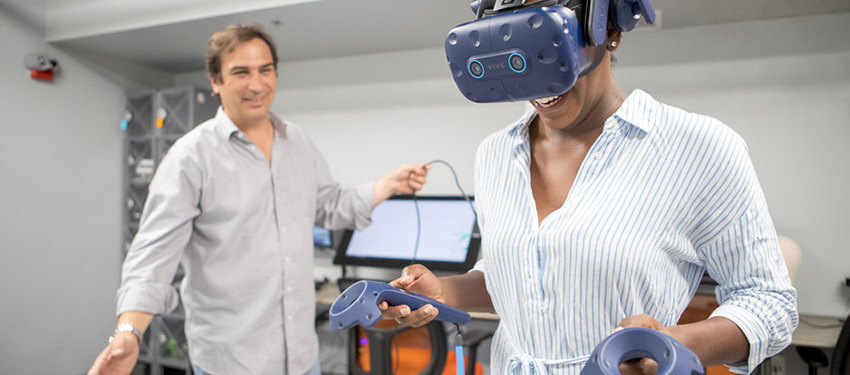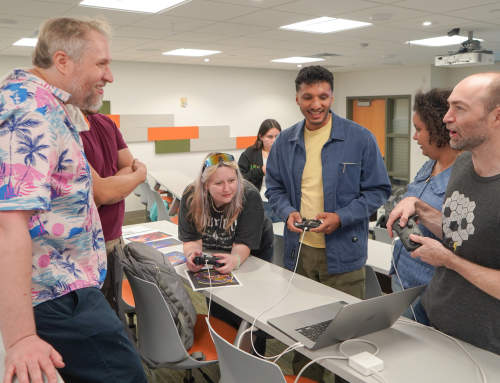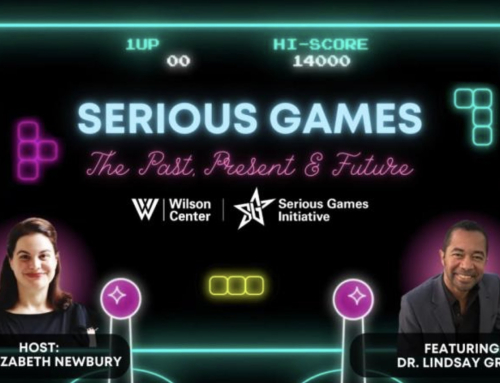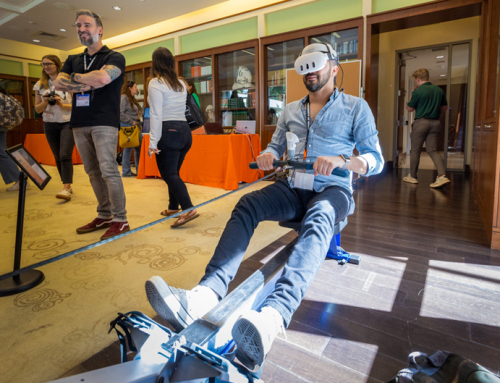A website that lists the political protests in the U.S. by state, topic, and frequency.
A digital reporting system that tracks incidents in nursing homes to aid health care providers.
A colorful website with illustrations and linear graphs that dissect the poems of feminist poet Anne Sexton by showing the frequent use of certain words and the positive or negative bent of each poem.
All these innovative works are student projects from the University of Miami School of Communication’s Interactive Media Program.
Fueled by changes in communication and the rapid rise of digital media, the program has grown in popularity. Established in 2013, it draws students who wish to become product designers, design researchers, web developers, game designers, and others who want to use their digital skills in the fields of business, journalism, health, or with nonprofit groups. Next fall, the program will become a full-fledged department.
“The internet changed everything, and students need basic fluency in technology to succeed in today’s world,” said Kim Grinfeder, associate professor in the School of Communication and director of the Interactive Media Program. “Interactive technologies have affected every aspect of our lives with far-reaching and long-lasting cultural and educational impacts. Traditional M.F.A. programs are having to adapt to this change, everything is data driven now, and I feel we are ahead of the curve in this aspect,” he added.
The program, which offers four areas of instruction—game design, data visualization, user experience, and interactive storytelling—recently received a major donation from Fabio Ribeiro, a 2017 alumnus of the program. The $158,000 gift will establish the Ribeiro Innovation Endowed Program Fund, which will bring industry leaders to address students and establish workshops where students can hone their skills.
“This gift is significant in recognizing the importance of our newly established Interactive Media Department, formally in place in fall 2020,” said Karin Wilkins, dean of the School of Communication. “We understand that interactive and digital technologies are transforming how we live our lives, and that we must ensure ethics and accountability through our educational programs, along with inspiring creative and critical approaches in our pedagogy.”
For Ribeiro, who now works for Neptuno Fund Ltd., a technical venture company, he thinks that providing students with practical advice from people in the industry is crucial for their professional growth. When he took the Interactive Media Program, he already had two degrees in finance, and he credits the program with helping him bridge the “gap between business and technology.”
“The program helped me get a grasp on new technologies,” Ribeiro said. “Now, when I am with a client, I can talk technology at their same level. It helped me understand what they are doing, but it also helps me get their respect.”
Ribeiro said he decided to donate to an endowed program fund after a conversation with Wilkins, an expert on global media and communication, because he was impressed with her forward-looking view of the journalism world.







